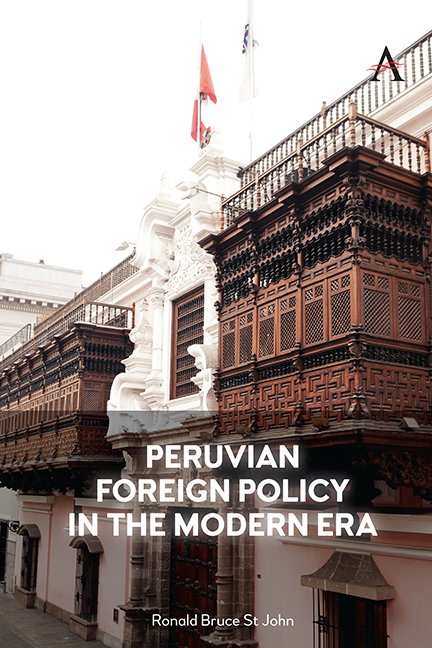Book contents
- Frontmatter
- Dedication
- Contents
- List of Figures
- Acknowledgments
- Abbreviations
- Map
- 1 Introduction
- 2 Alberto Kenya Fujimori, 1990–2000 and Valentín Paniagua Corazao, 2000–2001
- 3 Alejandro Celestino Toledo Manrique, 2001–2006
- 4 Alan García Pérez, 2006–2011
- 5 Ollanta Humala Tasso, 2011–2016
- 6 Pedro-Pablo Kuczynski Godard to Francisco Rafael Sagasti Hochhausler, 2016–2021
- 7 José Pedro Castillo Terrones To Dina Ercilia Boluarte Zegarra, 2021–2023
- 8 Conclusions
- Works Cited
- Index
1 - Introduction
Published online by Cambridge University Press: 28 February 2024
- Frontmatter
- Dedication
- Contents
- List of Figures
- Acknowledgments
- Abbreviations
- Map
- 1 Introduction
- 2 Alberto Kenya Fujimori, 1990–2000 and Valentín Paniagua Corazao, 2000–2001
- 3 Alejandro Celestino Toledo Manrique, 2001–2006
- 4 Alan García Pérez, 2006–2011
- 5 Ollanta Humala Tasso, 2011–2016
- 6 Pedro-Pablo Kuczynski Godard to Francisco Rafael Sagasti Hochhausler, 2016–2021
- 7 José Pedro Castillo Terrones To Dina Ercilia Boluarte Zegarra, 2021–2023
- 8 Conclusions
- Works Cited
- Index
Summary
The Republic of Peru enjoys a rich and storied history, and this is especially true when it comes to its external affairs. General José de San Martín in early August 1821, six days after he declared Peru independent, established the Ministry of State and Foreign Relations, appointing Juan García del Río as the first minister of foreign affairs of Peru. Following the decisive patriot victory at Ayacucho in 1824, Peruvian independence was finally secured, and the goals, capabilities, options, and constraints of Peruvian foreign policy began to clarify. In common with most of its neighbors, Peru from the outset focused on the accomplishment of a limited number of core objectives central to the well-being of any independent state, including political sovereignty, territorial integrity, continental solidarity, and economic independence.
With the exact location of its boundaries in dispute, Peru embraced the principle of uti possidetis de jure de 1810 which generally stated that each new state was entitled to the territory formerly under the jurisdiction of the colonial administrative unit from which it was formed. Territorial issues were often complicated by the commercial advantages at stake as the coastal states of South America quarreled over trade routes and seaports. Ideological differences intensified all of these conflicts as did concerns for regional hegemony. Peru shared with neighboring states a profound awareness of interlocking interests, and bilateral disputes frequently assumed multilateral dimensions as states shifted alliances in search of relative advantage. The conflicting demands of independence and interdependence, as determined by this mix of domestic and international forces, strongly influenced the content and expression of Peruvian foreign policy over much of the next 200 years (Wagner de Reyna 1964, 1: 9–14).
End of the Beginning
Under President Ramón Castilla (1845–51, 1855–62), Peru first acquired the degree of internal peace, centralized and efficient state organization, adequate and reliable public funding, and an emerging sense of national unity necessary for the formation of a foreign policy. During his two terms in office, Peru experienced for the first time a government that outlined a foreign policy at the outset of its term and then worked to achieve its stated objectives. Articulating a coherent, comprehensive foreign policy founded on the principles of continental solidarity, nonintervention, and national integrity, Peru under Castilla assumed a leadership role in continental affairs.
- Type
- Chapter
- Information
- Peruvian Foreign Policy in the Modern Era , pp. 1 - 6Publisher: Anthem PressPrint publication year: 2023



